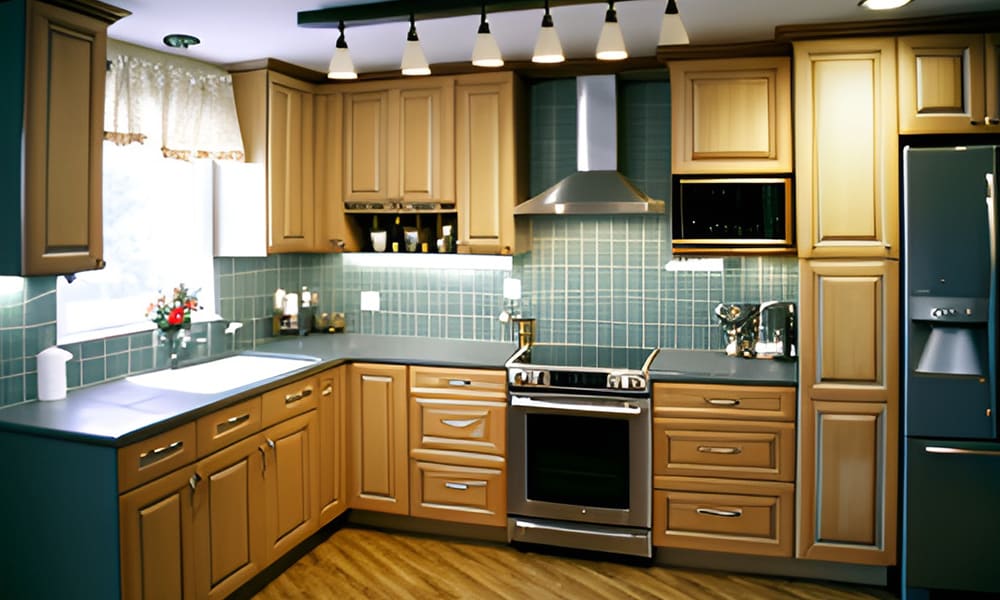Plan Your Outdoor Kitchen: Layout, Appliances & Materials
Transform your backyard with a well-planned outdoor kitchen. This guide covers layout strategies, grill selection and placement, appliance choices, materials, and site considerations like permits, drainage, and winterization. Learn how to create a functional, safe, and stylish patio kitchen that fits your cooking habits and withstands the elements. Keywords: outdoor kitchen, patio, grill, appliances, materials, layout, installation.

A well-designed outdoor kitchen blends efficient workflow, durable materials, and the right appliances to make outdoor cooking enjoyable and low-maintenance. Below are practical considerations to help you plan an outdoor kitchen that fits your patio, cooking style, and climate while meeting safety and code requirements.
Zones, workflow, and ergonomics
Think of your outdoor kitchen in zones: cooking, prep, refrigeration, and cleanup. Centering the grill as the main cooking station with prep counters and a sink nearby speeds up food prep and minimizes unnecessary steps. Match counter heights and clearances to comfortable indoor ergonomics so you can work without strain. Leave wide walkways between zones to allow multiple people to move safely during food prep and socializing. Include dedicated storage for tools, cookware, and pantry items to cut down on trips indoors.
Plan utilities early in the design phase. Decide where gas lines, electrical outlets, and plumbing will run so they can be routed before hardscaping or masonry work starts. Design a hidden but convenient trash and recycling zone, and install task lighting over work surfaces along with softer ambient lighting for dining and seating areas to extend usability into the evening.
Choosing and siting the grill
Select a grill that fits how you cook. Gas grills are convenient for frequent, quick meals; charcoal, wood-fired grills, and smokers are better for slow, flavor-driven cooking. Built-in grills give a seamless, custom look but need a solid base, ventilation, and proper fitting. Freestanding units are easier to replace or upgrade and provide flexibility during layout changes.
Follow local codes and manufacturer guidance for clearance from combustible materials and structures. Place grills on a noncombustible surface and orient them to prevent smoke from drifting toward seating areas or the house. Account for prevailing wind directions when choosing placement, and avoid overhangs or low branches that could present fire hazards.
Appliances and practical features
Beyond the primary grill, add appliances that match your menu and entertaining style. Side burners are useful for sauces and stovetop tasks, while pizza ovens and smokers expand your cooking repertoire. An outdoor-rated refrigerator and an ice maker keep ingredients and beverages within reach; these units are built to endure temperature swings better than indoor models.
Choose durable fixtures—stainless steel appliances, sealed sinks, and weatherproof cabinetry—to reduce upkeep. Consider modular or freestanding components that can be reconfigured or upgraded as needs change. Proper venting, grease traps, and hood systems (when applicable) will minimize buildup and odors and protect surrounding areas.
Site preparation and regulatory considerations
Check local permitting and inspection requirements for gas, electrical, and permanent structures before work begins. Site conditions—drainage, soil stability, and contractor access—should guide placement and foundation choices. Sloped properties may need grading or retaining walls to create a level pad for appliances and seating.
Climate influences material and plumbing decisions. In cold regions, plan for plumbing shutoffs, insulation, and winterization procedures to avoid freeze damage. Confirm that contractors have experience with outdoor kitchens in similar environments and verify licenses and insurance before hiring. Leave access space for maintenance and potential future expansion during layout planning.
Patio materials, finishes, and integration
Your outdoor kitchen should visually and functionally integrate with the patio and landscape. Select paving and countertop materials that bear appliance weight, resist stains, and cope with foot traffic. Natural stone, concrete pavers, porcelain tiles, and specialized outdoor composites each have distinct looks and maintenance profiles. If your kitchen sits on wood decking, install noncombustible pads or heat shields under the grill and high-heat appliances.
Consider adding a shelter—pergola, awning, or roofed structure—to protect cooking and seating areas from sun and rain, which also extends the season of use. Durable countertop choices include granite, concrete, and engineered outdoor surfaces that tolerate weather and spills. Choose finishes and colors that complement the home and landscaping to create a unified backyard living area.
| Item | Typical Cost Range (USD) |
|---|---|
| Built-in grill | $1,200 – $10,000+ |
| Outdoor refrigerator | $800 – $3,000 |
| Pizza oven or smoker | $1,000 – $6,000 |
| Countertops (per linear foot) | $100 – $400 |
| Weather-resistant cabinets (per linear foot) | $200 – $800 |
| Basic installation and utilities | $1,500 – $6,000+ |
Cost disclaimer: Prices are estimates and vary by region, material quality, and labor. Obtain local quotes for accurate pricing.
Maintenance, safety, and longevity
Regular maintenance preserves function and appearance. Clean grease traps, empty and service filters, and winterize plumbing if necessary. Protect metals from corrosion by choosing marine-grade stainless steel in coastal areas and applying sealants to porous stone or concrete surfaces.
Safety measures include keeping fire extinguishers accessible, inspecting gas fittings periodically, and ensuring electrical components have GFCI protection. Educate household members and guests on safe distances and proper operation of outdoor appliances.
Final considerations
A successful outdoor kitchen melds smart layout, appliance choices that match how you cook, durable materials suited to your climate, and compliance with local codes. Thoughtful planning up front—utilities, site prep, and ergonomic design—reduces long-term maintenance and creates an inviting outdoor living space where cooking and entertaining come together seamlessly.






